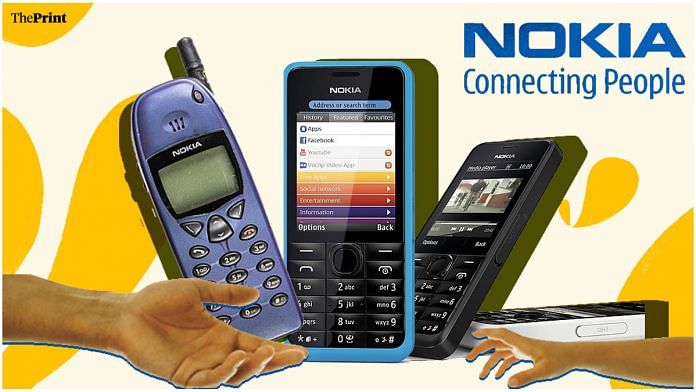New Delhi: In October 2016, a mobile phone saved the life of a man in Afghanistan when a bullet got lodged in the device instead of his body. Similarly, in 2012, a person filming a fight between rebels and the military in war-torn Syria had a basic keypad mobile phone to thank when it too caught a bullet and saved its owner.
Unsurprisingly, both phones were made by none other than Finnish multinational telecom company, Nokia.
Whether it’s the 301 model that hit the market in 2013 or the 6110 model from the ’90s, Nokia has always been synonymous with sturdiness and durability — the internet is flooded with memes about the indestructibility of these phones.
A Reddit thread in 2011 that claimed the Nokia 1100 phone could only be destroyed in the fires of Mordor, a fictional volcano in the fantasy epic The Lord of the Rings, was the start of thousands of memes. When iPhones became all the craze in the late 2000s, more memes emerged comparing the way an iPhone’s screen would break if it hit the floor while a Nokia would “break the floor”.
“I ran over my [Nokia] 3210 once, accidentally, and it gave my car a flat tyre. I then called my sister with the same phone to drop off the spare tyre. TRUE STORY,” joked one Reddit user.
Last year, global research firm Counterpoint Research found that in terms of build quality — product robustness, force measurement, drop and impact, fatigue, wear and scratch, thermal tests, moisture and liquid tests — Nokia phones do undergo tougher tests than the industry average.
Market domination, Snake and a $7.2 billion mistake
Before Apple and Android usurped the mobile phone business, Nokia was the phone to have. Who can forget that famous glowing logo of holding hands that appeared when you hit the power button? The 3310/3330 model, first released in 2000, was among the best-selling phones with roughly 126 million units produced.
“Nokia was so dominant. People didn’t talk about what brand, it was just about the number, 3210, or whatever you had. They took users on a journey,” Ben Wood, an analyst at research and market intelligence firm CCS Insight, once told the BBC.
Nokia arguably changed the game with mobile gaming too. When the Nokia 6110 model launched in 1997, the Finnish company for the first time introduced the ‘Snake’ game, based on the idea of an elongating reptilian creature that moved faster as it consumed more dots (food) on the screen, but died if it collided into itself.
The game became so iconic that it has since been credited with signalling a new era in mobile gaming which we now know today as dominated by games like CandyCrush, Temple Run, Subway Surfer, PUBG and many more.
Though Nokia wasn’t the first company to release a commercially available mobile phone, it found a way to dominate the industry in the late ’90s and 2000s.
That was until 2013, when software maker Microsoft swooped in and bought the company’s Devices and Services department that was responsible for smartphones and feature phones, later dubbed a “$7.2 billion mistake”. To add salt to the wound, Microsoft in 2016 decided to “streamline” its smartphone business, writing off $950 million and cutting 1,850 jobs.
That said, Nokia is still viewed favourably within Finland and considered a huge part of uplifting the country’s economy in the turn of the 21st century. In a 2003 research paper titled ‘Overcoming a Technological Discontinuity – The Case of the Finnish Telecom Industry and the GSM’, researchers Olli Martikainen and Christopher Palmberg noted that in the peak year of 2001 Nokia accounted for roughly one-third of the country’s GDP growth.
(Edited by Paramita Ghosh)



